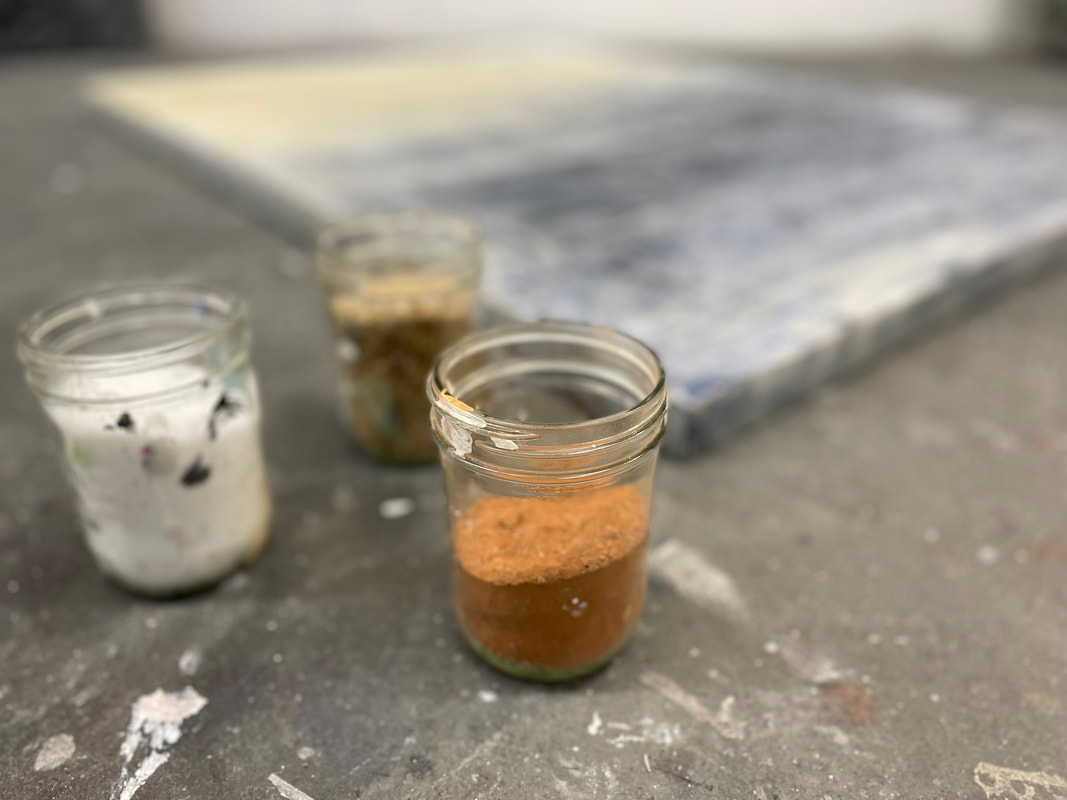|
Infusing the essence of the natural environment into my artwork has been a profound source of inspiration, enabling me to connect deeply with the places I inhabit. From the frozen landscapes of Canada to the bustling streets of Paris, the rain-soaked canvas in Hawaii to the salty embrace of Costa Rica's waters, each locale has contributed a unique touch to my creative expressions. Now, it's your turn to infuse your life into your artistic journey. How can you meld your experiences and surroundings into your work? Amidst the variety of materials I've explored to introduce texture to my paintings (for a comprehensive exploration, delve into 99 Way to Make Your Own Acrylic Texture Mediums) I find myself consistently returning to the three "S" elements: sand, salt, and sawdust.
Combining these three materials with acrylic paint, gel, and/or plaster opens up a spectrum of possibilities, endowing my creations with a rich tapestry of dimensions, textures, and hues. Here's how you can embark on this journey: For Gel or Plaster: Blend 2 parts medium with 1 part additive If you wish to introduce color, incorporate a measured amount into the mixture. Personal experience has shown that a little goes a long way. I often prefer to mix my colors and textures directly on the canvas, but if you find it more comfortable to pre-mix in a cup or with a palette knife, feel free to adopt that approach. A vital consideration is the color shift that occurs when mixing plaster with color. Be prepared for a transformation in hue. However, a word of caution regarding salt: moderation is key. While it's perfectly acceptable to integrate generous amounts of sand and sawdust, it's wise to exercise restraint with salt. Salt possesses hydrophilic properties, meaning it attracts water. This characteristic can hinder the mixture's adhesion to the canvas and lead to extended drying times, particularly in humid conditions. As you experiment, remember that with salt, less is more. So, as you navigate this textured path, embrace the artistry of combining the organic with the creative, giving your work a tangible link to the world around you. Comments are closed.
|
This blog was created to share my belief that the art-making process is a catalyst for transformation and personal empowerment. I am living proof.
Categories
All
|
